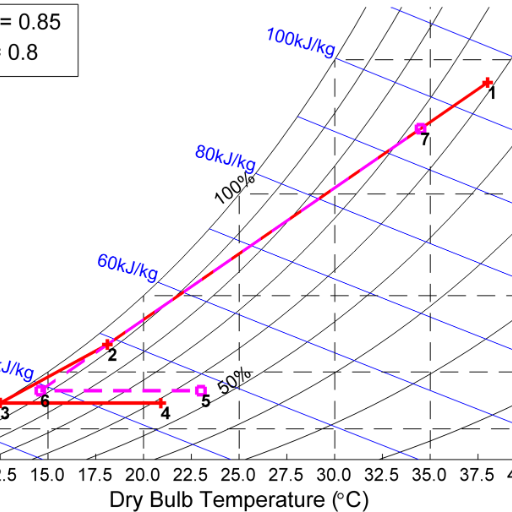Study GPT (Mechanics & Dynamics)-AI-powered mechanical engineering tutor.
Master Mechanics & Dynamics with AI
Related Tools
Load More
Mechanical Engineering
Expert in mechanical engineering concepts, calculations, and design.

Thermodynamics (Study GPT)
Thermodynamics GPT to help study introductory Thermodynamics topics.

Graduate Level Physics GPT
Expert in advanced physics, insightful and precise

Physics GPT
The best AI physics learning tool out here!

StudyGPT
AI Assistant for effective and fun learning.
Mechanics of Materials
Expert in Mechanics of Materials, aiding in understanding and problem-solving.
20.0 / 5 (200 votes)
Introduction to Study GPT (Mechanics & Dynamics)
Study GPT (Mechanics & Dynamics) is designed to assist students and professionals in understanding and applying mechanical engineering concepts, particularly in the areas of mechanics and dynamics. The core purpose is to provide detailed explanations, problem-solving strategies, and practical applications of these concepts to help users grasp the fundamental and advanced aspects of mechanical engineering. For example, if a student is struggling to understand the concept of stress analysis in beams, Study GPT can break down the topic into simpler components, explain the underlying principles, and guide the student through sample problems to reinforce learning.

Main Functions of Study GPT (Mechanics & Dynamics)
Concept Explanation
Example
Explaining the difference between statics and dynamics in mechanical systems.
Scenario
A student preparing for an exam needs to understand the fundamental differences between static and dynamic systems. Study GPT can provide a detailed explanation, including examples and equations, to clarify these concepts.
Problem Solving
Example
Guiding a student through solving a problem involving the calculation of shear force and bending moment in a beam.
Scenario
During a homework session, a student encounters a complex problem related to beam analysis. Study GPT helps by breaking down the problem into smaller steps, explaining each step, and providing the necessary formulas and methods to solve it.
Application of Mathematical Methods
Example
Applying differential equations to model the motion of a pendulum.
Scenario
In a dynamics course, a student needs to model the motion of a pendulum using differential equations. Study GPT can demonstrate how to set up the equations, solve them, and interpret the results, thereby linking theoretical knowledge with practical application.
Ideal Users of Study GPT (Mechanics & Dynamics)
Undergraduate Students
These students often need support in understanding complex concepts in mechanics and dynamics, solving homework problems, and preparing for exams. Study GPT can provide step-by-step guidance, detailed explanations, and practical examples tailored to their curriculum.
Graduate Students and Researchers
Graduate students and researchers may require advanced explanations, help with specific research problems, or assistance in applying mathematical models to their projects. Study GPT can offer in-depth insights, advanced problem-solving techniques, and support in exploring new areas of research.

How to Use Study GPT (Mechanics & Dynamics)
Visit aichatonline.org for a free trial without login, also no need for ChatGPT Plus.
Start by accessing the platform to begin using the Study GPT tool for your mechanical engineering needs.
Identify Your Specific Query or Topic
Clearly outline the mechanical or dynamic concept you need assistance with to get the most accurate and relevant help.
Engage with Detailed Explanations and Examples
Follow the in-depth explanations provided, and review example problems and solutions to deepen your understanding.
Utilize Visual Aids and Diagrams
Make use of diagrams, equations, and charts that are provided to aid in visual learning and better comprehension of complex concepts.
Iterate and Practice
Work through additional practice problems and revisit explanations as needed to reinforce your learning and ensure mastery of the topic.
Try other advanced and practical GPTs
Content Crafter
Crafting Your Content with AI Precision

Frank's Sports Betting
Smart Betting with Real-Time AI Power

Advanced Stock Market Analysis Educator
AI-powered stock analysis tool for technical traders.

Email Summarizer Ai
AI-powered email summaries & replies

Beauty Score
AI-Powered Beauty Assessment.

Script Savant: Screenwriting, Pitches & Visuals
AI-Powered Screenwriting and Pitch Generation

Analyse my arguments
AI-Powered Argument Analysis

IFS Coach
AI-powered coaching for personal growth.

Ad Copy Wizard
AI-powered ad copy crafted to convert
AMZN Ad Expert - Boost your campaigns 🚀
AI-powered Amazon ad campaign optimizer

Puzzle Constructor
AI-powered Puzzle Creation for Everyone

Angular Expert
AI-powered Angular development assistant.

- Problem Solving
- Exam Prep
- Homework Help
- Concept Review
- Project Assistance
Q&A About Study GPT (Mechanics & Dynamics)
What topics can Study GPT (Mechanics & Dynamics) help with?
Study GPT covers a wide range of mechanical engineering topics including dynamics, statics, fluid mechanics, thermodynamics, material science, and manufacturing processes.
How detailed are the explanations provided by Study GPT?
Explanations are comprehensive and detailed, breaking down complex concepts into understandable steps, often including diagrams and equations to aid comprehension.
Can Study GPT assist with homework and problem-solving?
Yes, Study GPT can guide you through solving specific problems, providing step-by-step solutions and strategies to approach similar problems on your own.
Is there a cost associated with using Study GPT?
No, you can access Study GPT for free by visiting aichatonline.org without needing a ChatGPT Plus subscription.
How does Study GPT enhance learning for mechanical engineering students?
Study GPT offers targeted explanations, practical examples, and interactive problem-solving that help students grasp challenging concepts and apply them effectively.